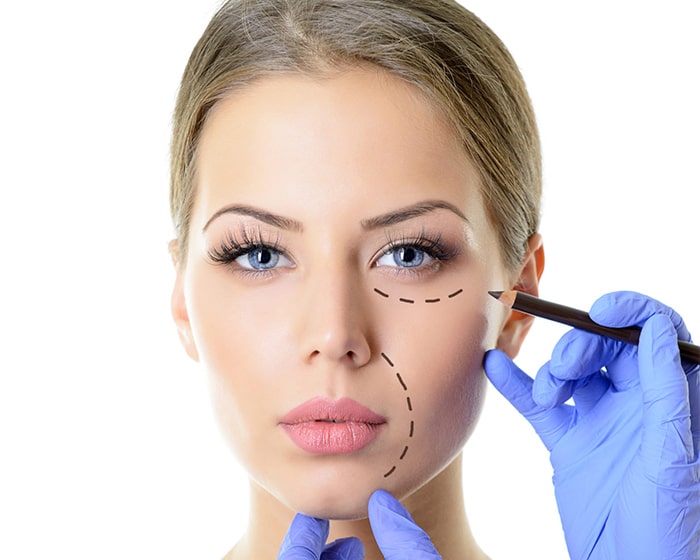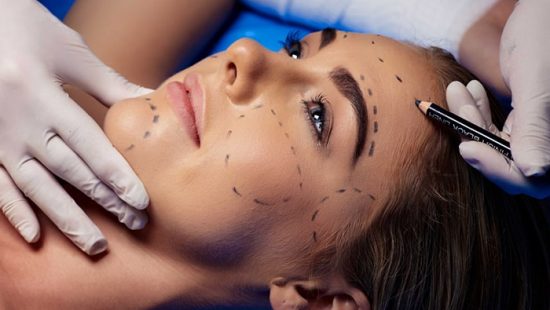Dermal Fillers
Description ( Overview)
Dermal fillers are essentially soft tissue fillers that are injected into areas of the face to fill out wrinkles and thereby restore a smoother and more youthful appearance.
The material that is injected into the skin, however, will eventually be absorbed by the body which means that the results are only temporary. The results themselves will vary according to the patient, their goals, and the type of dermal filler that is used. here are a variety of FDA approved filler products that cosmetic surgeons use. In general, fillers are categorized by the substance they are made from.
Hyaluronic Acid (HA)
Hyaluronic acid is a naturally occurring substance that is already found in your skin. It helps keep skin plump and hydrated. HA fillers are typically soft and gel-like. The results are temporary, lasting 6 to 12 months or longer before the body gradually and naturally absorbs the particles. Most HA fillers are infused with lidocaine to help minimize discomfort during and after treatment. FDA approved HA fillers include:
- Juvéderm products: Juvéderm XC, VOLUMA, VOLBELLA, VOLLURE
- Restylane products: Restylane, Restylane Silk, Restylane Lyft, Restylane Refyne, and Restylane Defyne
- Belotero Balance
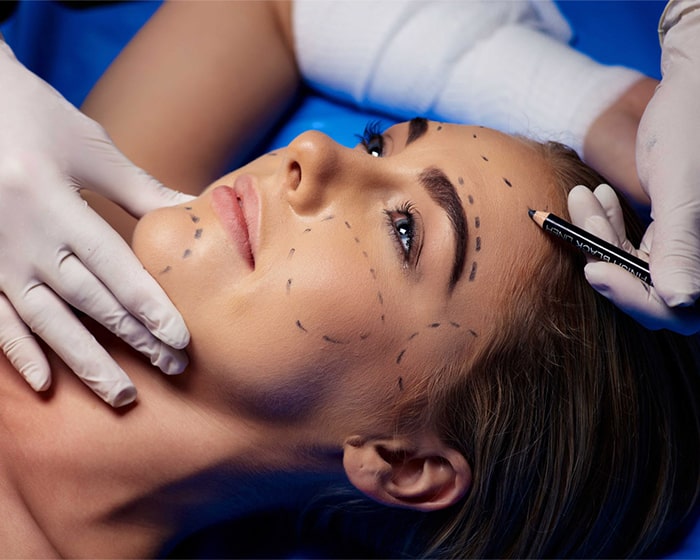
Calcium Hydroxylapatite (CaHA)
Calcium hydroxylapatite is also a naturally occurring substance, found primarily in our bones. When used in a filler, the calcium particles are nearly microscopic and suspended in a smooth gel. The consistency of a CaHA filler is typically thicker than that of a hyaluronic acid filler and typically last longer as well, about 12 months for most patients. Calcium hydroxylapatite is also reported to help stimulate natural collagen production, and it is typically used for deeper lines and wrinkles. FDA approved CaHA fillers include Radiesse.
Poly-L-lactic Acid
Poly-L-lactic acid is a biocompatible (meaning it is safe to use in the body), biodegradable synthetic substance. It has been used for many years in medical devices, such as dissolvable stitches. Poly-L-lactic acid products are technically classified as “collagen stimulators,” as their main mechanism to smooth fine lines is by helping your skin rebuild natural collagen—the filler gel itself dissipates a few days after treatment. Poly-L-lactic acid is typically used to treat deeper facial wrinkles, and results can last more than 2 years. FDA approved Poly-L-lactic acid fillers include Sculptra Aesthetic.
Polymethylmethacrylate (PMMA)
Polymethylmethacrylate (PMMA) is a synthetic, biocompatible substance that has been used in medicine for much of the last century. In dermal fillers, PMMA takes the form of a “microsphere” or tiny ball, that remains beneath the skin indefinitely to provide continued support. PMMA fillers will also contain collagen, a naturally occurring substance in the skin that provides structure and firmness. FDA approved PMMA fillers include Bellafill (formerly known as Artefill).
Autologous fat injections (facial fat grafting)
Autologous fat injections are the only injectable filler treatment that requires surgery, but results can last for many years. Your own fat is harvested from another area (autologous means “from the same person”), typically using liposuction. The fat is then purified and injected into the face to help restore volume to the cheeks, temples, lower eyelids, or other areas. Fat injections require specialized training to perform safely and achieve great results, and should only be performed by an experienced, board certified cosmetic surgeon.
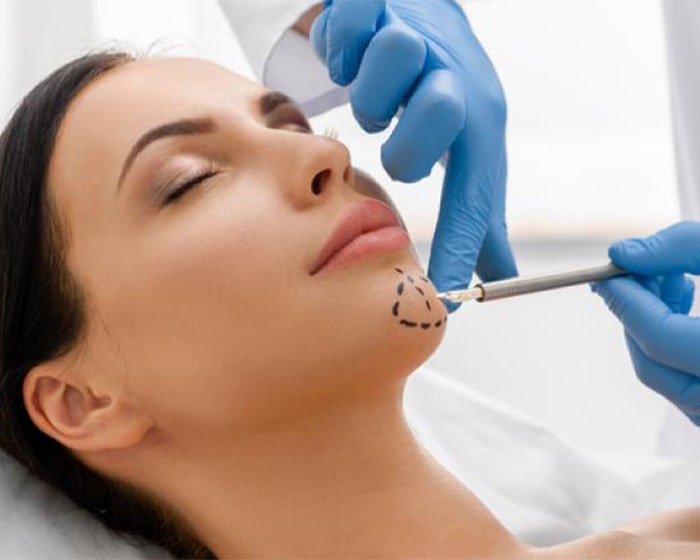
Why Dermal Fillers Is Reguired?
Essentially, dermal fillers will help the patient to achieve a more youthful look by filling out wrinkles and facial lines in certain areas. One of the most important benefits of dermal fillers is the fact that there is no waiting time for a result. From the moment that a person has the procedure performed they will witness immediate benefits, and there is no prolonged process that requires swelling or bruising to subside.
Many patients also appreciate the relatively long-lasting results that can be achieved. While the length of the results will vary according to the type of filler used, they can last for an impressive amount of time, sometimes several years.
Why Iran Is Suitable For Dermal Fillers ?
Patient Eligibility \ Who Can Have Dermal Fillers?
If you are troubled by a loss of volume in your face, or if you never had much volume there to begin with, you may be a good candidate for dermal fillers. Dermal fillers are designed to replenish volume in areas of the face where it’s been lost through aging, weight loss, and other causes. Fillers are a popular choice because they help add volume back to key areas such as the cheeks, lips, chin, and jawline.
Ideal candidates include:
-Those that have minimal to no allergies to products
-Those in good health
– Those with problem areas they’d like to have fixed such as wrinkles, folds, creases, etc.
– Non-smokers
-Male or females of almost any age
-Those with a positive outlook and realistic goals for their health and image
-Those that are committed to maintaining the filler look with great skin health
How Is Dermal Fillers Done? (Procedures)
Dermal filler injections are non-surgical and typically completed during an office visit. Just before the actual treatment, the area will be cleaned, and you may be given a topical anesthetic to numb the area prior to injection. Many filler products also contain lidocaine, a mild anesthetic, which is intended to help minimize discomfort during and after your treatment. Your provider will then inject a precise amount of filler strategically beneath the skin.
Depending on the product and the areas treated, you should be able to notice results immediately after receiving filler injections. Some patients experience mild bruising and swelling, but these are temporary and should subside over the days following treatment. You will be able to go back to your normal activities right after treatment, but your cosmetic surgeon may ask you to take the day off from exercise or other strenuous activity.
If you are having fat injections…
Facial fat grafting is a surgical procedure and follows a different treatment protocol. Typically, fat grafting is performed as an outpatient procedure, using general anesthesia or local anesthesia with sedation. Up to 2 weeks of downtime may be required, depending on the extent of liposuction performed. Your cosmetic surgeon will go over what to expect with surgery and recovery during your consultation.
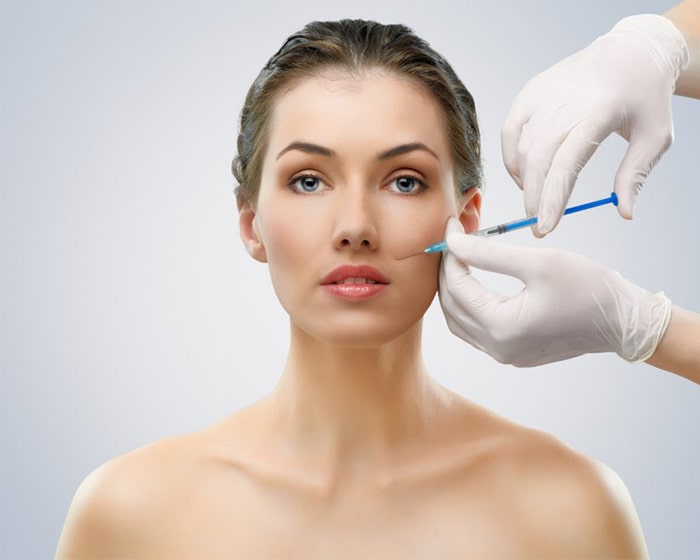
Preparation & Recovery
Your surgeon will provide thorough pre-treatment instructions and answer any questions you may have. In the weeks before your injections, you’ll be asked to refrain from taking aspirin, ibuprofen, vitamin E, and any other medications that could cause bruising. Be sure to inform your physician of any medicines you are taking.
Immediately after injection
You will likely see the results of your injections immediately following the procedure, though it’s not uncommon for patients to experience swelling or minimal bruising in the area of the injection site. Your physician may give you an ice pack or cold compress to help stem swelling. The period of swelling will depend largely on the type of soft tissue filler you received, though most swelling, bruising, and redness should dissipate within one week to ten days.
Other Options
Choosing Between Fat Grafting and Dermal Fillers
Fat grafting and dermal fillers are both excellent choices for adding volume to a lacking area of the face. Both treatments can improve skin abnormalities, correct aging issues and provide a more youthful appearance. Fat grafting can also be used to restore volume in the breasts or enhance the shape of the buttocks. Patients who do not want surgery, or those who do not have enough fat to harvest, are better candidates for dermal fillers. Dermal fillers can be administered for immediate results but the outcome is temporary. While fat grafting requires a recovery time, only one treatment is usually needed. When considering either option, a patient should consult with a board-certified doctor. A skilled doctor can discuss the advantages and disadvantages of fat grafting and dermal fillers in order to help patients choose the most appropriate treatment to meet their needs.
Risks & Complication
There are very few risks associated with fillers, but you should contact your doctor if:
– Swelling, bruising, or redness does not dissipate after one week
– You experience acute pain near the injection site coupled with asymmetry, lasting more than seven to ten days after the procedure
-You develop any nodules or bumps in or around injected areas or any uneven areas around the skin
